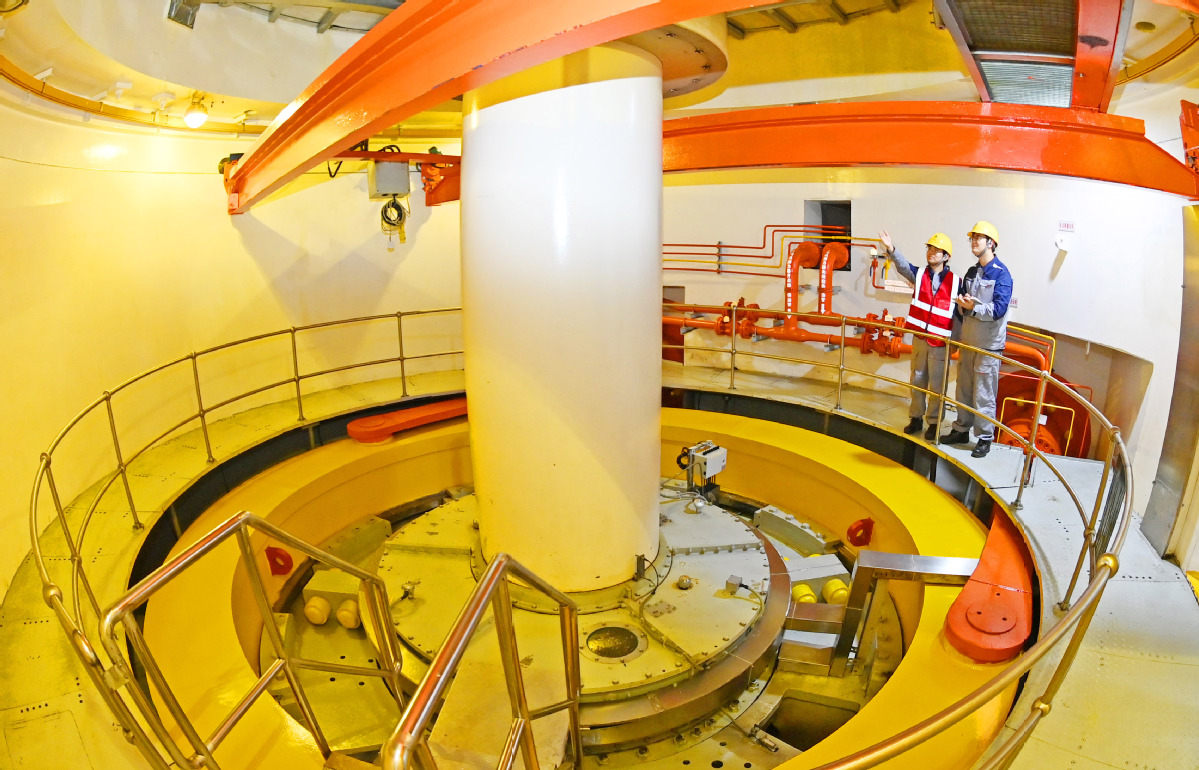
Technicians check equipment at a pumped storage hydropower facility in Wuhu, Anhui province, in April. SONG WEIXING/FOR CHINA DAILY
A significant number of pumped storage projects are expected to be operational by around 2028, effectively addressing the mismatch between low levels of power generated from renewable energy and high installed capacity volume, and further promoting renewable energy as a primary power source, said Zhang Yiguo, deputy head of the China Renewable Energy Engineering Institute.
The latest report from the CREEI indicated that last year, renewable energy accounted for 84.9 percent of newly increased installed capacity but only 32 percent of electricity generation, with wind and solar only contributing a combined 15 percent of total generation.
Experts said a primary reason for this is low generation hours due to the intermittency and variability of renewable energy sources. The commissioning of numerous pumped storage hydropower projects, combined with the development of new energy storage technologies and advances in the grid network, are expected to significantly improve the overall situation.
Energy storage systems, whether they be pumped storage hydropower or large batteries, enable the integration of renewable energy sources — which may have intermittent or variable output depending on weather conditions — into an energy grid while maintaining the grid's stability and reliability.
"Currently, planned and under-construction capacity for pumped storage is substantial. However, due to the long project cycles, these are expected to become operational around 2028 or by the end of the 15th Five-Year Plan (2026-30) period. This will significantly aid in establishing new energy as the mainstay of the power generation system, which is part of the goal amid China's green commitments," Zhang said.
Last year, 49 new pumped storage power stations were approved, with a total capacity of 63.43 million kilowatts, according to CREEI data.
In 2023, 5.15 million kW of pumped storage hydropower was put into operation, bringing cumulative installed capacity to over 50 million kW. In the same year, new types of energy storage installations reached 22.6 million kW, bringing cumulative installed capacity to 31.39 million kW by the end of the year.
This year, new pumped storage capacity is expected to be around 6 million kW.
"In addition to traditional pumped storage hydropower, innovation in new types of energy storage technologies is necessary to improve the integration of power from new energy sources to the grid. This includes technologies such as flow batteries, compressed air energy storage and chemical energy storage. It is also crucial to establish and enhance large power grids and distribution networks," Zhang said.
Du Zhongming, head of the electricity bureau of the National Energy Administration, said at a recent conference that further efforts are underway to accelerate power grid construction and enhance power transmission mechanisms, as China's power grid faces increasing stability challenges with the rising share of electricity generated from intermittent new energy sources.
These efforts include advancing the completion of 33 key projects, such as the Sichuan-Chongqing ultra-high voltage alternating current project, and expediting the commencement of construction on 37 key projects.
"We will also strengthen the construction of the distribution network that connects the grid to users to meet the requirements of large-scale development of distributed new energies. By 2025, the distribution network will have the capacity to accommodate approximately 500 million kW of distributed new energies," said Du.
Source: By Liu Yukun, chinadaily.com, July 03, 2024 [https://www.chinadaily.com.cn/a/202407/03/WS6684ae54a31095c51c50c12c.html]

